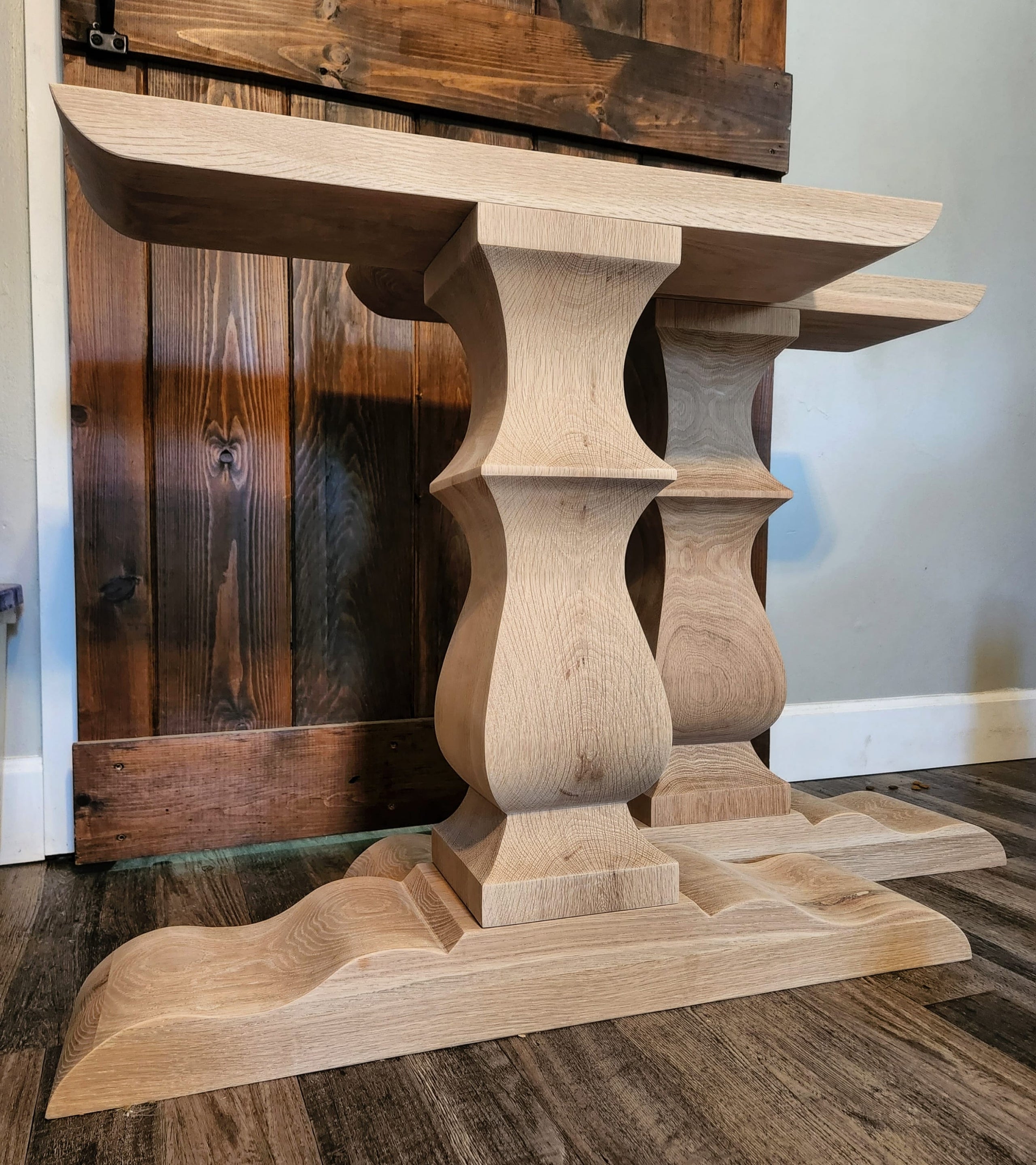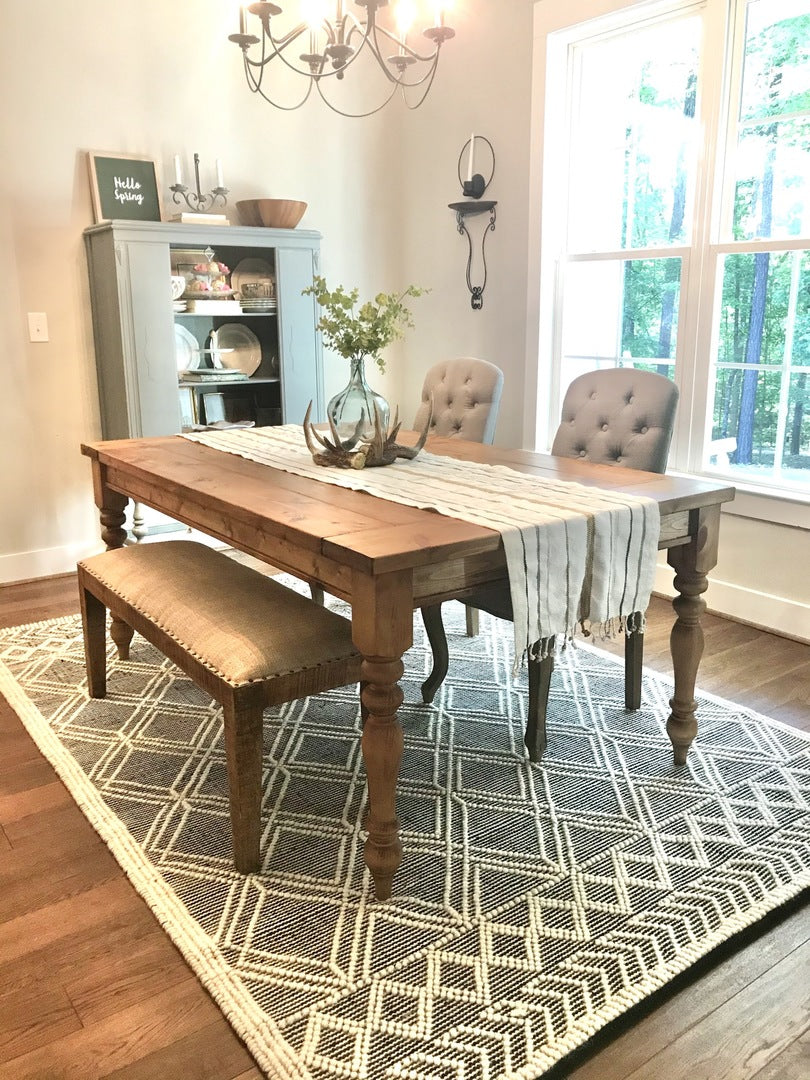Upgrade Your Furnishings with Trendy Dining Room Table Legs
Upgrade Your Furnishings with Trendy Dining Room Table Legs
Blog Article
Selecting the Perfect Table: What Styles Job Best for Your Home?
Choosing the optimal eating table for your home can be a nuanced procedure that balances aesthetics and performance. Whether your area leans in the direction of typical elegance, contemporary minimalism, rustic beauty, or commercial posh, the selection of designs readily available can accommodate diverse preferences. Each design uses one-of-a-kind benefits and obstacles that can either enhance or interrupt your eating location's consistency. Comprehending how different products, forms, and sizes communicate with your existing design is vital. To navigate these options successfully and discover a table that truly matches your home, consider the complying with aspects thoroughly.
Analyzing Your Space
Reviewing the dimensions and layout of your dining area is a vital very first step in choosing the ideal eating table. Begin by gauging the length and width of the space, accounting for entrances, windows, and other architectural attributes that could influence table positioning. This makes sure that your table not just fits but also enables comfortable activity around it.
Consider the number of individuals you normally amuse. A table ought to suit your family's daily needs while providing adequate adaptability for periodic visitors. As a regulation of thumb, allocate at the very least 24 inches of table size each to ensure a comfortable eating experience.
It's additionally important to preserve appropriate clearance around the table. Preferably, there need to be at least 36 inches between the table side and walls or other furniture, making it possible for easy accessibility and activity. For rooms where chairs with arms or extra storage units like buffets are involved, increasing this clearance to 48 inches is suggested.
Lighting and atmosphere play significant functions also. Make certain that your dining table straightens with existing illumination fixtures or plan for adequate lighting solutions. This detailed spatial analysis assurances that your table not just fits literally but likewise integrates with your area's total performance and visual.
Popular Table Styles

Typical table often feature elaborate details, rounded legs, and rich timber surfaces, stimulating a sense of classic elegance. They are ideal for homes with timeless decoration or those seeking to add a touch of sophistication to their eating location.
Modern eating tables focus on simplicity and clean lines, typically integrating products like glass and steel. These tables are optimal for modern areas, offering a smooth and clean look that matches minimal design approaches.
Rustic eating tables, on the various other hand, highlight natural materials and a handcrafted look - dining room table legs. They frequently include recovered wood and a troubled coating, producing a cozy and inviting atmosphere. These tables function well in farmhouse-style homes or those seeking a cozy, natural feel
Industrial eating tables integrate raw products such as steel and timber, often showcasing a practical visual. This design is fit for lofts or metropolitan spaces, adding a touch of sturdy charm and toughness to the dining experience.
Each design provides unique benefits, making it vital to select one that straightens with your home's general design and your individual choices.
Material Options
When choosing a table, the selection of material plays a critical function in figuring out both the table's aesthetics and functionality. Wood, metal, glass, and composite materials each deal unique advantages and challenges, making it essential to align the product with your home's decoration and way of living requirements.
Wood is an ageless and flexible choice, available in varieties such as oak, walnut, and mahogany. Recognized for its toughness and warmth, wood enhances both conventional and contemporary insides. It calls for normal upkeep to stop scratches and bending.
Metal tables, typically crafted from stainless steel, light weight aluminum, or functioned iron, are applauded for their contemporary appeal and robustness. They are specifically fit for industrial or minimalist setups but can be prone to dents and might really feel chilly to the touch.
Glass table bring an air of elegance and openness, suitable for smaller sized rooms as they create an impression of more room. While easy to clean, glass can be at risk to spots and needs cautious taking care of to prevent chips and fractures.
Composite materials, such as MDF and plywood, offer economical and see personalized solutions, though they may do not have the long life of natural materials. Picking the best product ensures your table is both a functional property and an aesthetic delight.
Shape and Dimension Factors To Consider
After identifying the ideal product for your eating table, the following factor to consider is picking the ideal sizes and shape to match your space. The shape of the table significantly influences the area's aesthetic and performance. Rectangular tables, one of the most common form, are suitable for larger rooms and can fit a higher variety of guests. They additionally permit for a much more official eating experience. Alternatively, round tables promote a sense of affection and are excellent for smaller sized eating areas, urging discussion by removing corners and making every person feel just as consisted of.
As a guideline of thumb, allot at least 24 inches of table size per person to guarantee comfortable dining. In addition, consider the table's clearance room: there need to be at least 36 inches in between the table side and the walls or other furniture. Extending tables provide adaptability if you regularly hold larger celebrations, offering additional seating when needed without inhabiting additional space daily.
Matching Your Decor
Choosing an eating table that balances with your existing decoration is essential in producing a cohesive and welcoming space. A sleek, minimal table with tidy lines is suitable for a modern blog home, while a vintage, luxuriant table matches a more conventional setup.
Color and product are just as substantial. If your decor includes warm tones and natural products, consider a wooden table to improve the natural feeling. Conversely, a glass or steel table might be more suitable in an area dominated by trendy colors and industrial elements. Take notice of the surface, as it must mirror other furniture and components to keep consistency.
A rough-hewn, redeemed wood table can add personality to a rustic area, while a polished see it here marble surface can raise a luxurious dining location. A well-matched eating table not just improves aesthetic charm yet likewise enriches the total eating experience.

Conclusion
Picking the suitable eating table requires cautious factor to consider of space, design, materials, form, and dimension (dining room table legs). Typical tables complement timeless interiors with abundant wood finishes, while contemporary tables match modern setups with glass and metal. Rustic designs present warmth using all-natural materials, and industrial styles enhance urban environments with raw components. Integrating the table with existing style makes certain both capability and aesthetic appeal, adding to a cohesive and cosmetically pleasing dining area.
Report this page